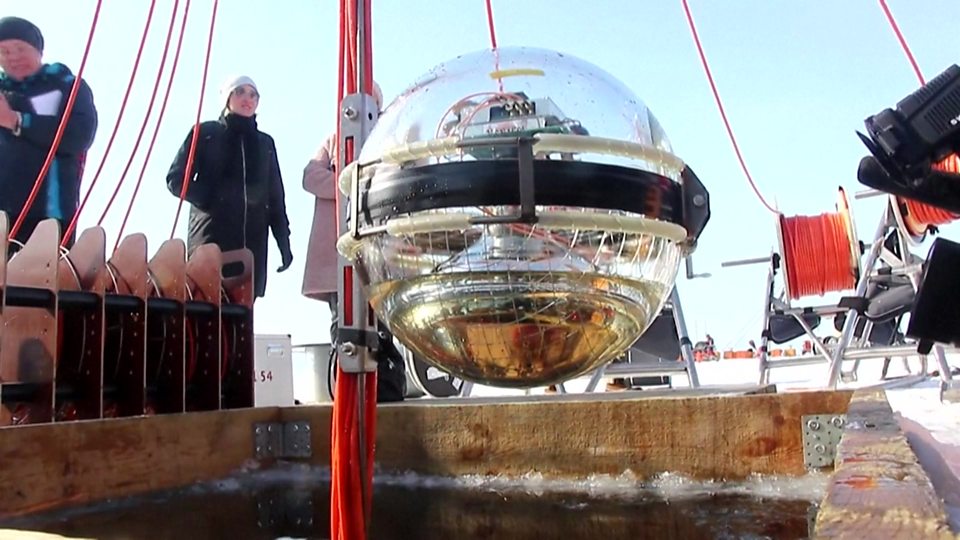本集内容
Discovering the Universe’s best kept secrets 水下望远镜探索宇宙奥秘
学习要点
有关 “science(科学)” 的词汇
边看边答
Which Russian lake is this telescope being dropped into?
文字稿
This is the world’s biggest underwater telescope – plunging into the world’s deepest waters to discover some of the tiniest particles known to man.
这是世界上最大的水下望远镜,潜入世界上最深的水域,探索人类已知的最小微粒。
This massive space telescope is what it takes to detect the Universe’s best kept secrets – neutrinos – also nicknamed ‘ghost particles’.
科学家们需要用这台大型太空望远镜来探测宇宙中最隐蔽的秘密,即中微子,别名 “幽灵粒子”。
Made of strings, glass and stainless steel, Russian scientists are plunging it more than 700 metres into Russia’s Lake Baikal.
这台望远镜由细线、玻璃和不锈钢制成,俄罗斯的科学家们正在把它投入俄罗斯贝加尔湖700多米深的地方。
Bair Shaiybonov, Senior Researcher, Joint Institute for Nuclear Research
Lake Baikal is perhaps the only lake where a neutrino telescope can be deployed due to its depth. We need the greatest possible depth, over a kilometre. Fresh water is also important for its transparency. And we also have an ice covering lasting two to two and a half months, which is very important for the deployment of the telescope.
拜尔·沙伊博诺夫 杜布纳联合核子研究所高级研究员
“贝加尔湖可能是唯一一个可以安置中微子望远镜的湖泊,因为它很深。我们需要尽可能深,超过一千米深。淡水也很重要,因为它的透明度高。此外,贝加尔湖面一年中有两到两个半月被冰层覆盖,这对望远镜的安置来说非常重要。”
So why go to all this effort? Neutrinos are subatomic particles, and while there are plenty in the Universe, they’re very hard to detect.
为什么要如此大费周折?中微子是次原子粒子,虽然宇宙中有大量中微子,但它们很难被探测到。
Scientists are hoping that by capturing the elusive neutrinos, they’ll be able to better understand the Universe – finding out how it came to be and how it’s evolved to what we know today.
科学家们希望,通过捕捉这些难以找到的中微子,他们能够更好地了解宇宙,并探索宇宙的诞生及演变至今的过程。
It seems some of the Universe’s biggest secrets are locked in a tiny package.
宇宙中的一些最重大的秘密似乎就藏在毫厘之间。
词汇
particles 微粒,粒子
detect 探测,检测
capturing 捕捉,采集信息
evolved 逐步演变
问题答案
Russian scientists are plunging the telescope more than 700 metres into Russia’s Lake Baikal.


 3342次下载
点击下载
3342次下载
点击下载
 2621次下载 点击下载
2621次下载 点击下载
 4734次下载 点击下载
4734次下载 点击下载
 1854次下载 点击下载
1854次下载 点击下载
 1391次下载 点击下载
1391次下载 点击下载
 1391次下载 点击下载
1391次下载 点击下载











